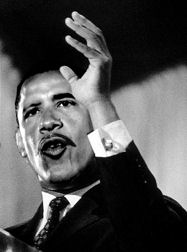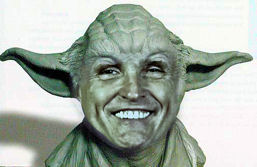Channeling MLK
 Monday, January 21, 2008 at 09:37AM
Monday, January 21, 2008 at 09:37AM  Quote: “In the struggle for peace and justice, we cannot walk alone. In the struggle for opportunity and equality, we cannot walk alone. In the struggle to heal this nation and repair this world, we cannot walk alone.” Barack Obama
Quote: “In the struggle for peace and justice, we cannot walk alone. In the struggle for opportunity and equality, we cannot walk alone. In the struggle to heal this nation and repair this world, we cannot walk alone.” Barack Obama
Figure of Speech: symploce (SIM-plo-see), the first and last repeat. From the Greek, meaning “interweaving.”
After Hillary Clinton made the mistake of saying it took a president to push through civil rights legislation, Barack Obama has been channeling MLK as much as he can. The effort is paying off: Obama snagged nearly all the black vote in the Nevada caucuses.
Yesterday he gave a Kingly sermon at MLK’s Ebenezer Baptist Church. The speech occasionally slipped into wonkish arrhythmia, with clunky phrases like “empathy deficit.” But Obama got the crowd amen-ing when he picked up the figures that MLK used. One of the best is the symploce, which repeats the beginning and end of successive phrases, clauses or sentences.
Obama uses this rhythmic figure toward the end of his oration. Cicero would approve. Save the pathos for the end, he said.
Hillary must wish she can keep the beat as well as her opponent — or her husband.
Snappy Answer: “In the struggle to end this speech, we…what were you saying?”




